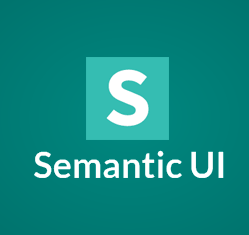Frameworks for U and I
23 Feb 2017
UI Frameworks Are Totally Worth It
I believe that utilizing UI Frameworks is much simpler and easier than just coding in raw HTML and CSS. Personally, I’ve only used Semantic UI, but I find it to be a great boon for web developers, as it allows you to have an entire suite of functionality to create your projects with. Despite the fact that you have to learn an entirely new syntax and “language”, it is more efficient and requires less effort and time than using a markup language. There are less rules to follow and Semantic UI streamlines web development, specifically web design.
I feel that the UI Frameworks’ ability to make coding easier also benefits the software engineering community, because the ubiquity of a framework can facilitate the democratization contribution towards open source programs. Not only does it make web design simpler and more accessible, but it can help set a community standard. If everyone were to use a framework such as Semantic UI, then it would be easier for software engineers to understand each others’ code without much effort. Thus, UI Frameworks not only gives the developer an overall better experience, but it also helps to facilitate contribution and collaboration on various web design projects.
With the help of UI Frameworks, a user is able to easily input all different types of things. Icons, menus, containers, you name it. Semantic UI is able to take in everyday words and interpret it into code. It allows a user to have concise HTML and uses simple phrases in Javascript that trigger functionality. Why wouldn’t someone want to use Semantic UI? Personally, I can’t find a reason not to. Before using Semantic UI, I had to use HTML and CSS by themselves, this wasn’t horrible, but it definitely left much to be desired, even if I didn’t realize it at the time. After using Semantic UI, I definitely saw how using HTML and CSS by themselves wasn’t the most appealing option since Semantic UI was more or less like a multitool that had something for every situation you may encounter, whereas in contrast HTML and CSS each were more akin to a standalone tool that served one singular purpose.